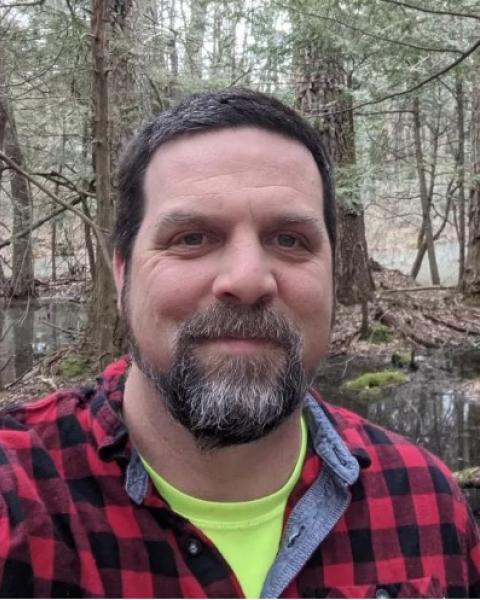When Community Land Preservation and Social Distancing Collide
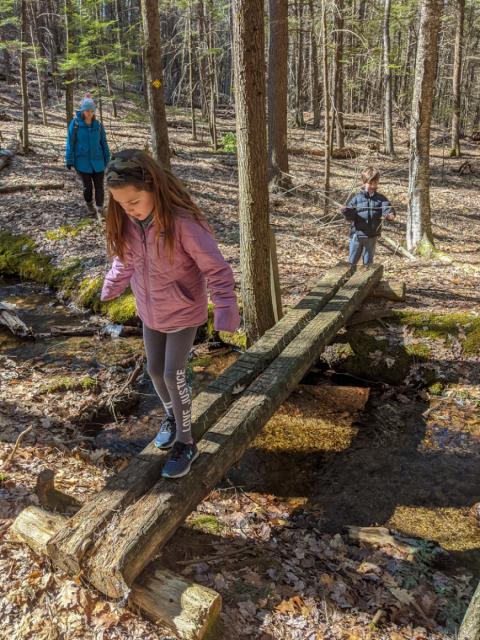
Like many of us are doing in these challenging times, I'm reconnecting and recharging my batteries by spending time in nature when I can. As the Hillsborough County Forester, I already spend a lot of time in the woods as it is, to which I feel lucky and blessed that I get to help landowners better understand and steward their lands. After all, two-thirds of New Hampshire is owned by private non-industrial landowners – folks like you and me. The fate of our forests is literally in our collective hands. As much as I feel lucky to spend time in the woods helping people for my job, I also always require a regular dose of solitude in nature to relax, gather my thoughts and do a bit of navel gazing, and explore what’s around the next bend.
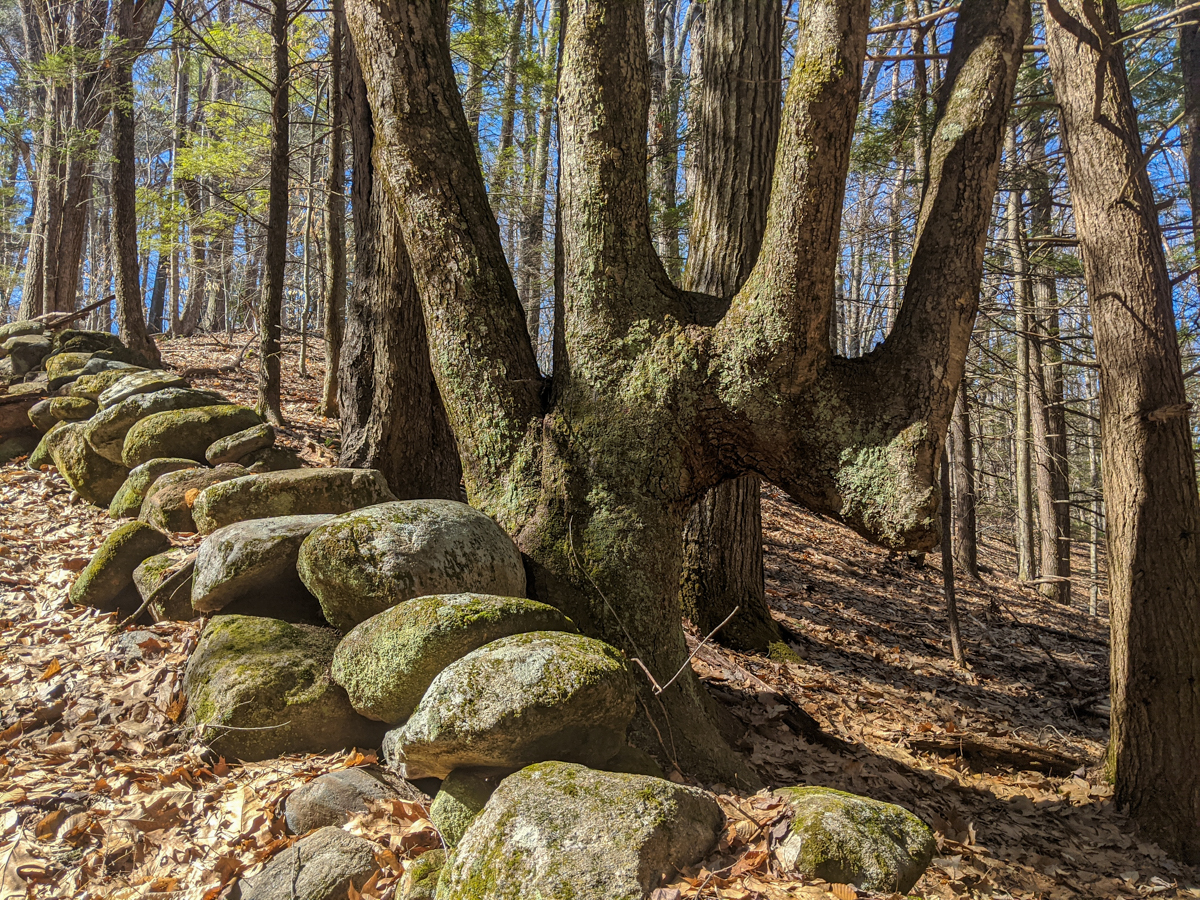
Recently, I started exploring Sheldrick Forest in Wilton, owned by the Nature Conservancy. This unique 227-acre forest contains a rich diversity of topography and species and represents a rather exemplary example of old forest in southern New Hampshire. There are only about 3,000 acres of true old growth forest in New Hampshire, and while this might not fit the definition of true old growth since much of it was once pasture, it is still very old. There are large oaks, pines, and hemlocks throughout the forest with some pines pushing 150 feet tall. Many of the trees have diameters well over 24 inches in DBH (Diameter at Breast Height)—the standard height at which foresters measure trees at 4.5 feet off the ground on the uphill side of the tree.
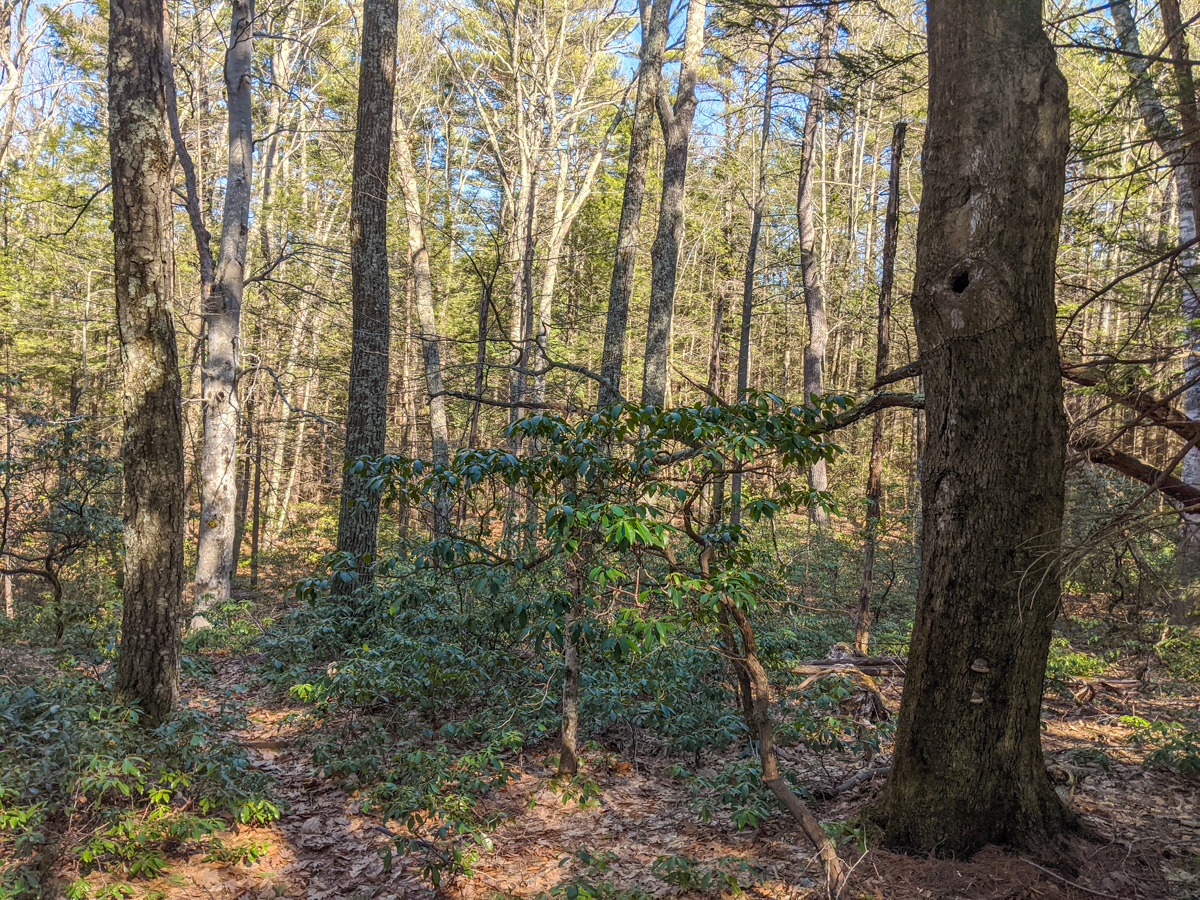
The story of how this forest was conserved is as unique as its ecology. This is another aspect of my job that I absolutely love. The rich tapestry of people and place that occur throughout our state, and how the stories weave together, can be read in both the landscapes and in the people who manage the land. One of the trails in this forest is named “Swifts Way” and refers to NH licensed consulting forester Swift Corwin, who played a central role in the current fate of this tract of land ending up under the protection of the Nature Conservancy.

were going to be cut.
In the mid 1990’s, Swift, a young forester at the time, was hired to cruise this piece of land along with two other foresters, Jack Walsh and Jason Weatherbee. Cruising is a term used to describe how a forester systematically inventories a forest. After several weeks of marking trees for a timber sale, at the direction of its then owners, Swift and crew started thinking more and more about the true uniqueness of this piece of forest. As a forester, I support managing forests for multiple use —the best way to protect our natural resources is through their wise-use and careful management. The economic value of the forest-based components of the economy of New Hampshire is $2.3 billion annually.
In addition to conservation, there is also a need for preservation to maintain what is unique about our state and its culture. Swift and crew felt the need to shift from conservation towards preservation with this particular job, so he approached the landowners and asked, “Would you be willing to sell this piece of land if I found a buyer?” The owners agreed...for the right price of course. And so, the foresters went to work on finding a buyer.
Many community folks came together on this “Save Sheldrick Forest” effort to raise the funds necessary to purchase the property, including neighbors Randi Stein and Judy Cahoon, the Pine Hill Waldorf School in Wilton, Nature Conservancy staffers, and others. Raising enough money was a longshot to Swift and his fellow foresters, but community involvement made it possible.
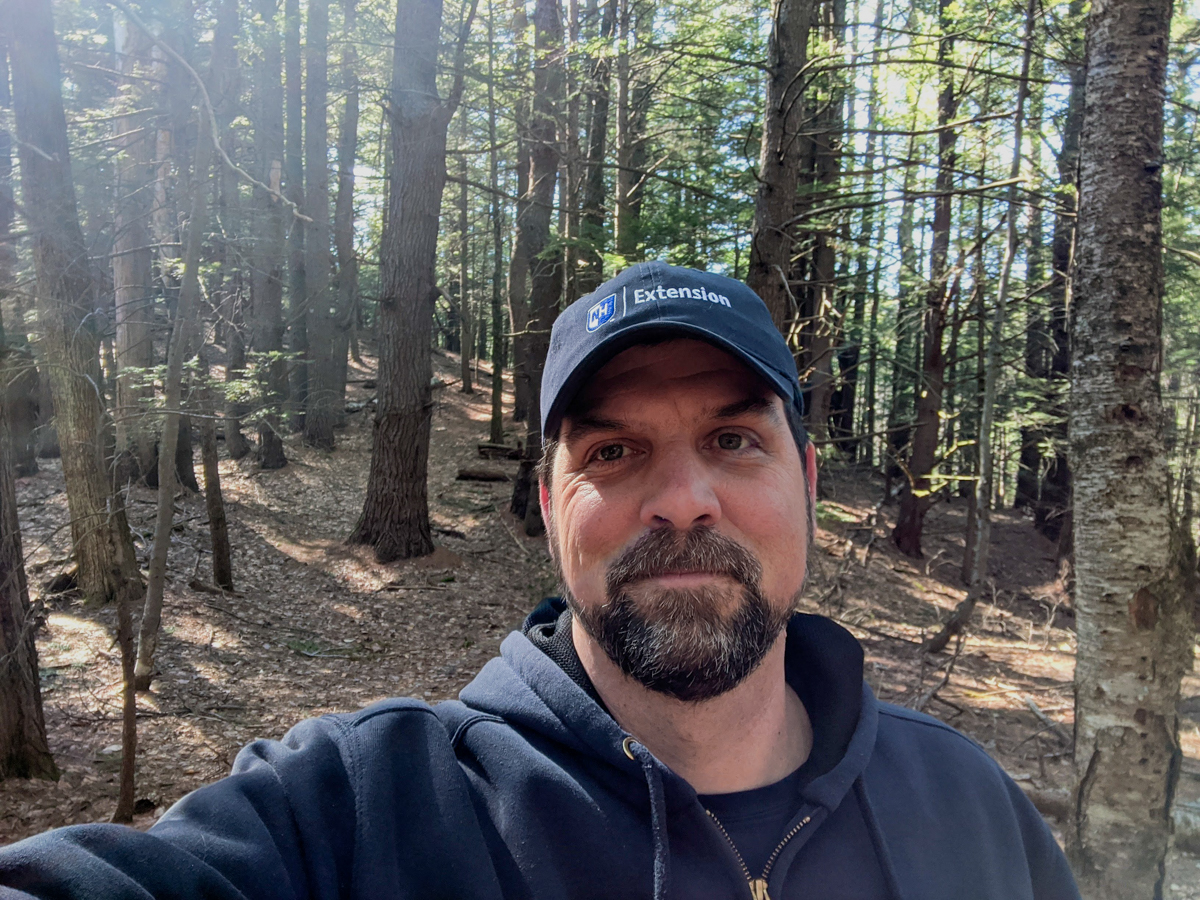
In the past few weeks, I have taken two solo trips through this forest. As foresters we often choose solitude in the forest voluntarily, and it’s nice to see so many others out enjoying this same experience in recent days. The good news is there are many places like this to go in the effort to continue social distancing, staying healthy, and equally as important, staying local while doing so. On my third trip to the property, I brought my family along. My son Grant is 6 and my daughter Aubrey is 8. Like so many others, we are able to enjoy the unique aspects of this property and follow Swifts Way as we navigate the current stresses we are all facing in these uncertain times.
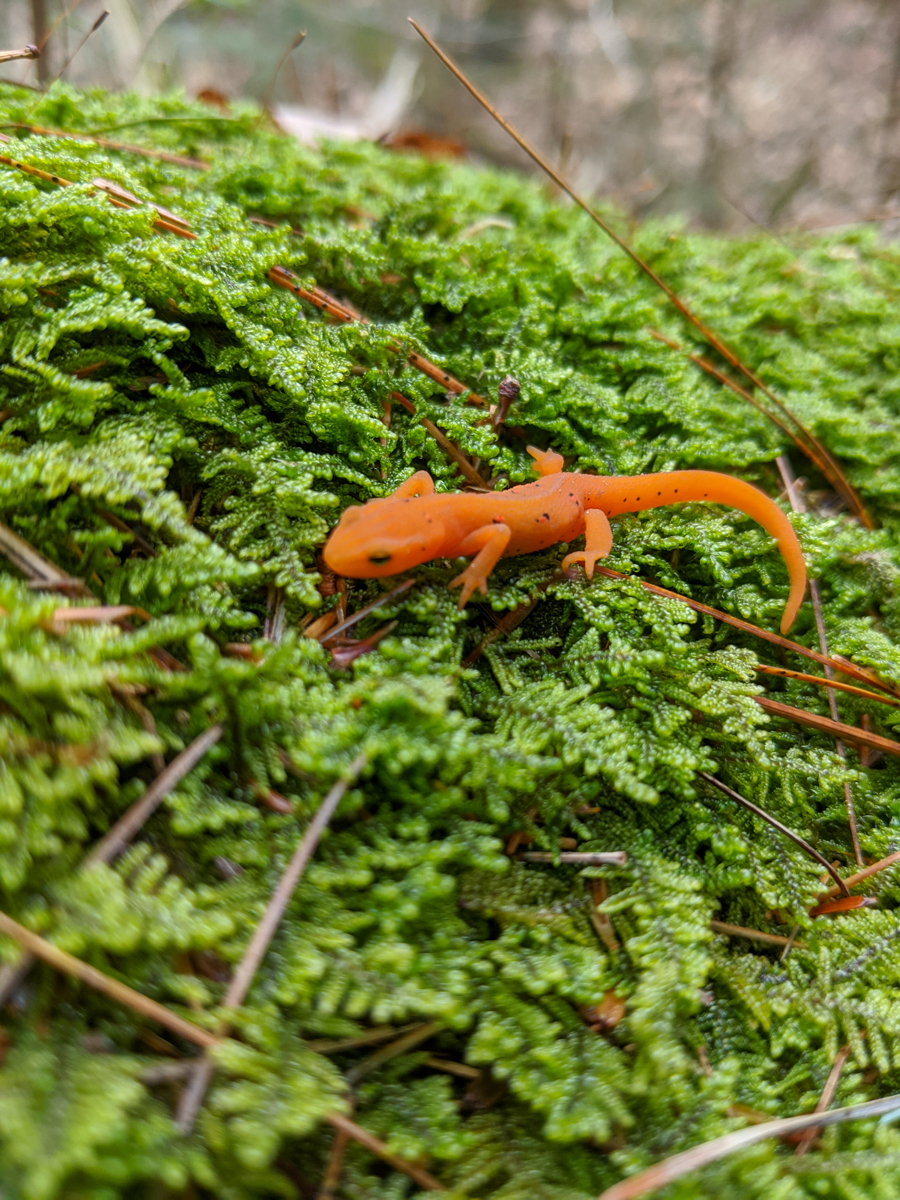
As Swift was marking trees on this property, he wrote a poem which he recently shared with me. In one of my jaunts to this forest I found some of the tell-tale blue paint on the trees marked for harvesting from approximately 25 years ago. Swift says “It is nice to come east toward Wilton and see it on the right. I think of it as a kind of gateway to the Monadnock Region."
Marking Timber
by Swift Corwin
Blue paint leaves a spray gun’s nozzle
And travels to a tree.
There is a short time,
When, after the trigger is squeezed,
The tree remains unmarked.
The decision has been made.
The walk has been taken.
The tree has grown.
The paint is suspended in flight.
The paint will hit the tree
Where some Red Soldier Lichen cling.
The tree’s texture is an intricate city of hues,
Coarsenesses, and smoothes.
Which is made even more so
By these hangers on.
The paint flies,
The drops atomize.
A squirrel earlier today passed the place
On which aim was taken.
His feet knocked some lichen loose
As he flew up the tree,
Fleeing from a fox:
Circling at the base.
The squirrel with lichen
And bits of bark between his toes
Watched as the foxes fancy
Was caught by a turkey.
He trailed away and danger passed.
Much of the blue mist
Will miss the tree and blow off in a cloud,
Some of which the painter
Will by accident breath.
The mark will be made
By the center of the paint spray mist.
But not yet.
Earlier today it rained.
Fourteen raindrops
Had they been halted
Would have stood in collision’s course with the paint.
But those fallen drops now,
Wet the smallest hairs,
On the smallest roots of that tree,
Which will soon be dressed with blue.
When the mark is made,
Should the color fade,
A few more raindrops may fall.
